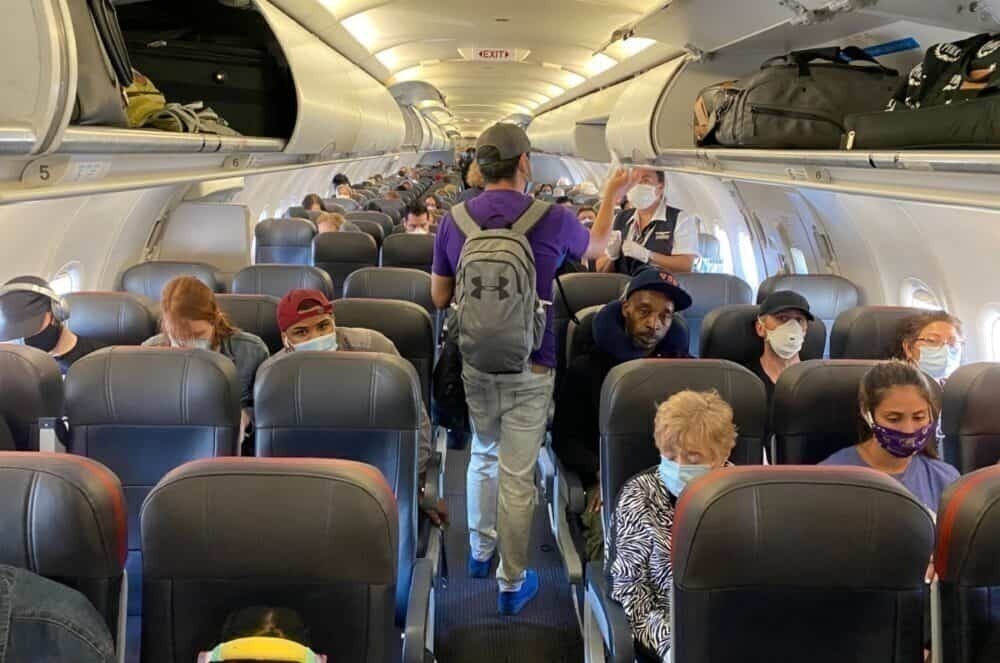A new study released on July 8th from a Massachusetts Institute of Technology (MIT) Professor that shows a blocked middle seat could reduce the risk of contracting COVID-19 from a nearby passenger in about half. However, in general, the risk in non-blocked middle seats is still quite low.

Results of the study
Dr. Arnold Barnett, the George Eastman Professor of Management Science and Professor of Statistics at MIT Sloan School of Management, released some results of a data approximation study that analyzed the risk of contracting COVID-19 from passengers.
For aircraft that are full, the risk was estimated to be about 1 in 4,300. With the empty middle seat, that would go down to 1 in 7,700– nearly half that of a full flight.
The full study can be viewed here. Essentially, the study assumes that all passengers are wearing masks, which, based on previous research cited in the paper, would reduce the transmission risk by 82%. The study also looks at Airbus A320 and Boeing 737 aircraft in economy with the standard configuration.




The study considered calculations on flights being as full as possible. However, it did not consider the potentials for getting sick during the boarding or deplaning process and any movement in the cabin, such as crowding near the lavatory or during meal services.
What to make of it
The study, while it does help give some statistical evidence that flying is not a very high-risk activity, but still one that could carry risks, is conducted by someone highly respected. Per his MIT page, Dr. Barnett has a BA in mathematics from Columbia College and a Ph.D. from MIT. His focus is on applied mathematical modeling with a keen interest in public health and safety. The study is a preprint and has not been peer-reviewed, so there is one level of evaluation that is missing.
Nevertheless, the data shows a fair bit of interesting data. For one, that, with masks, the risk of contracting an infection onboard an aircraft is low. While some people may end up getting sick, most passengers should be fine. Without masks, however, it would be a much different story.




Another consideration would be the origin and destination of the flights. Flights leaving from hotspots like Florida, Texas, Arizona, and California would likely have a higher risk than flights departing places like Alaska or New York. It should also be noted that the study focused on statistics from the United States.
Should airlines block out the middle seat?
Several US airlines are blocking middle seats. In comparison, others have chosen not to. United has taken a relatively active stance in opposing the blocking of middle seats. American recently started booking flights to capacity. Meanwhile, Delta, Southwest, and JetBlue have stuck with blocking middle seats and restricting capacity. US airlines have, however, endorsed masks and attempted to increase enforcement.
US public health officials and government officials have raised concerns about selling flights to capacity. While getting full, recommended six feet of distance onboard a plane is nearly impossible, as much distance as possible is better than none as per this study. Still, it is up to carriers to make a decision.
Do you think the middle seat should be blocked onboard planes? Let us know in the comments!



